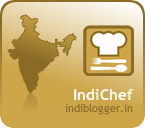The Karthigai Deepam festival is celebrated in the Tamil Month of Karthigai [November - December], which coincides with Krithikai star. It begins on Uttradam day with flag hoisting and goes on for nine days.
 |
| Karthigai Deepam Festival |
Unlike many other Hindu festivals, Karthigai is basically a Tamil festival and is virtually unknown in most other parts of the country. One of the earliest references to the festival is found in the Ahananuru, a book of poems, which dates back to the Sangam Age [200 B.C. to 300 A.D]. The Ahananuru clearly states that Karthigai is celebrated on the full moon day (pournami) of the Tamil month of Karthigai. It was one of the most important festivals [peruvizha] of the ancient Tamils. Avaiyyar, the renowned poetess of those times, refers to the festival in her songs.
Legend related to Thiruvanamalai: The Shivalinga in the temple here is the agni lingam. It is celebrated in a special manner in Thiruvanamalai, as Karthigai deepam is considered as main event and festival there.
It was in this month that Lord Siva created Lord Muruga from his Divine Light. Lord Muruga took the form of six babies in a lake called “Saravana Poigai."
Rows of [Mud lamps] Agal vilakkus in front of every house... this is the beautiful image that comes to mind when we think of Karthigai Deepam.
Let the light of Karthigai Deepam illuminate the darkness of ignorance and unhappiness and bring in enlightenment to our lives with joy and prosperity.
As is known, no South-Indian festival is without mouth-watering delicacies...Here are some of the important Neyvedhyam items for this important festival:
The items are Nel/Aval Pori and Appam. Pori [puffed rice] is of two kinds - Nel Pori and Aval Pori. However the preparation for both these items are similar. I give below the recipe:
Aval Pori [ Puffed Rice Flakes] - 6 Cups
Jaggery [Powered] 1/2 Cups
Coconut[ cut into small piece]s - 1 Cup
Cardamom Powder - 1 teaspoon
Dry Ginger Powder[ known as Sukku podi] - 1/2 teaspoon
Preparation:
1. Clean the Pori since it will have husks sticking to it and also you will find some small stones.
2. Melt the jaggery in just enough water so as to cover it. Strain the jaggery to remove of the impurities.
3. Then boil the jaggery enough so as to get a thick consistency. This is the most tricky part of the preparation as otherwise, if the jaggery is not consistent, the pori will sink in the jaggery and become soggy and spoil the preparation. As you boil the jaggery syrup, keep a bowl of water near by. As the jaggery thickens, drop a few drops into the water. Remove the jaggery from the water with your hands. Initially it will be as a soft ball. It will be in the form of jelly consistency. Boil the syrup for some more time and again, drop a few drops of it into the water. When the consistency forms into a hard ball, then the right consistency has been done. If you throw the ball on a hard surface, it should make a "thud" noise. This is what is known as "kallu padam".
4. Then remove the syrup from the stove quickly.
5. You may now add the coconut pieces and cardamom powder to the pori and mix continuously so that the pori gets coated with the jaggery evenly.
6. Allow this to cool a bit and then make small balls of pori. In case you are not able to make balls, you can leave it as it is.
Aval Pori is prepared the same way. You may clean the Aval from all the dirt, and then follow the same method as for the Nel Pori.
4. Then remove the syrup from the stove quickly.
5. You may now add the coconut pieces and cardamom powder to the pori and mix continuously so that the pori gets coated with the jaggery evenly.
6. Allow this to cool a bit and then make small balls of pori. In case you are not able to make balls, you can leave it as it is.
Aval Pori is prepared the same way. You may clean the Aval from all the dirt, and then follow the same method as for the Nel Pori.
This is a very tasty dish which all the family members are sure to enjoy!
2. Karthigai Appam
 |
| Vella Appam |
Rice Flour - 1 Cup
Jaggery - 3/4 Cup
Ripe Banana - 1
Coconut cut into small pieces - 2 teaspoons
Cardamom Powder - 1/2 teaspoon
Oil for deep frying.
Method:
1. Add half cup of water to jaggery and mix well till it gets dissolved in water. Then strain it from impurities.
2. Then mash the banana into a fine paste and add this to the rice flour. You may then add the coconut pieces and cardamom powder also into the rice flour and mix well to form a smooth paste. Add Jaggery water and stir well and make a thick batter.
3. In a kadai, pour oil and when it is hot, take a spoon of batter and gently pour it in the hot oil. Fry till it is golden brown in colour and remove from kadai.
PS: You can make this Appam with Wheat or even Maida flour. You could also use sugar instead of jaggery. Instead of deep frying, you can make use of the Kuzhi Panniyaram plate and make this Appam.
2 Method:
Though making dough for this Appam is different with many people, preparing the traditional way of making batter by soaking urad dhal and grinding along with jaggery and coconut is no doubt very tasty too. A bit strenuous though....My mother always used to prepare Appam in this way and the recipe is given below:
Ingredients:
Raw Rice - 1 Cup
Jaggery - 1 Cup
Coconut [cut into small pieces] - 1 tablespoon
Cardamom powder - 1 tablespoon
Ghee for frying the Appams
Gingely Oil - 1 tablespoon.
Preparation:
1. Soak the rice for 2 to 3 hours and strain to remove the water. Grind to a fine powder in the mixer. You should sieve to remove any large particles. You can grind once again to get a finer powder.
2. Make a jaggery syrup to jelly consistency. Remove from the stove.
3. Add cardamom powder and coconut pieces and add the ground rice flour while mixing the dough continuously. Keep the dough covered for a few hours.
4. Heat the kuzhi-panniyaram kadai and add a tablespoon of oil and top it with some ghee. 5. When the ghee gets hot, put spoonfuls of dough into each depression /kuzhi. Allow the appams to cook well on one side and gently turn them with a spoon or skewer.
6. When they are done on both the sides[turn into golden brown in colour], remove them carefully from the kuzhi. Repeat the same with the remaining dough.
This is a very tasty dish, relished by one and all!
Happy Karthigai Deepam to all of you.

























